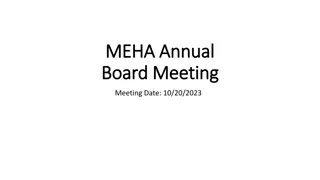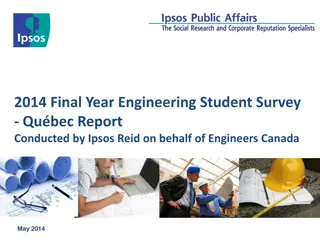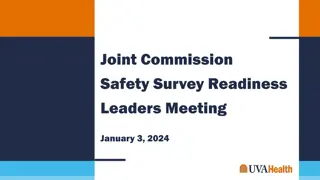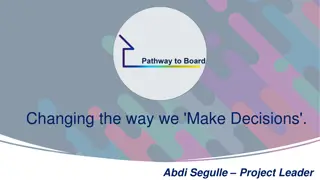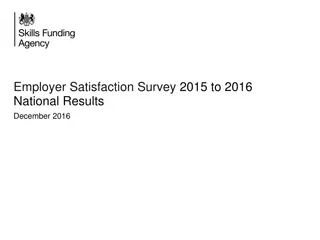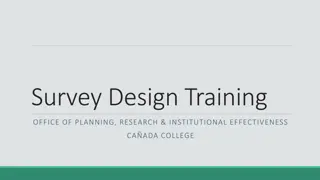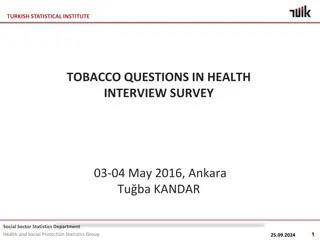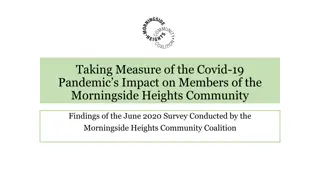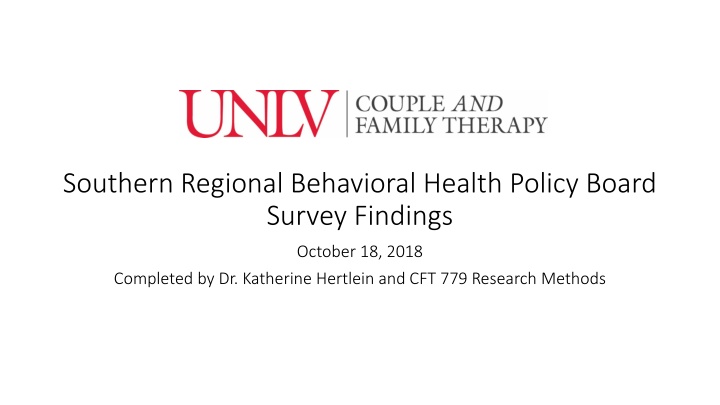
Behavioral Health Challenges in Southern Nevada: Survey Findings & Analysis
Explore the key issues affecting behavioral health in Southern Nevada based on a comprehensive survey and in-depth analysis conducted by Dr. Katherine Hertlein and research methods experts. Uncover critical obstacles, proposed solutions, policy changes, and insights into accessing treatment for patients and families in the region.
Download Presentation

Please find below an Image/Link to download the presentation.
The content on the website is provided AS IS for your information and personal use only. It may not be sold, licensed, or shared on other websites without obtaining consent from the author. If you encounter any issues during the download, it is possible that the publisher has removed the file from their server.
You are allowed to download the files provided on this website for personal or commercial use, subject to the condition that they are used lawfully. All files are the property of their respective owners.
The content on the website is provided AS IS for your information and personal use only. It may not be sold, licensed, or shared on other websites without obtaining consent from the author.
E N D
Presentation Transcript
Southern Regional Behavioral Health Policy Board Survey Findings October 18, 2018 Completed by Dr. Katherine Hertlein and CFT 779 Research Methods
Questions Asked Questions Asked 1. Please name the top 3 problems or issues related to behavioral health in southern Nevada. 2. Please suggest 2 solutions or plans to address each topic. 3. Please name the top 3 recent policy changes or promising areas of progress for behavioral health in southern Nevada (or Nevada as a whole). 4. Getting quality information about behavioral health in southern Nevada is challenging. What are the first 3 places (e. g., Websites, publications, reports, etc.) you look for behavioral health information in southern Nevada (or Nevada as a whole)? 5. What are the top 3 improvements or suggestions you would make in terms of gathering quality information about behavioral health? 6. As a patient or family member of a patient seeking or receiving behavioral health treatment (now or in the past), please describe your experience accessing and receiving treatment in southern Nevada.
Analysis Analysis Data was organized and cleaned by Dr. Kenneth McKay Dr. Katherine Hertlein took the raw data presented by Dr. McKay and removed numbers, participant identifiers, separated the questions and responses for a more efficient and independent process Master s-level students from UNLV s Couple and Family Therapy program enrolled in a Research Methods in Family Therapy course served as independent coders Each independent coder was asked to: Read 1-2 questions (7-8 pages of data) Identify what themes seemed to keep popping up in the data Note the frequency of the themes Complete a form detailing the themes they saw as well as the frequency of the themes, offer suggestions for improving the methods, and generate ideas for potential follow-up items on future surveys In cases where the count different among coders, the mean of the observations was taken to compute the percentage
Findings Question 1: Please name the top 3 problems or issues related to Findings Question 1: Please name the top 3 problems or issues related to behavioral health in southern Nevada. behavioral health in southern Nevada. CODE NAME/CATEGORY FREQUENCY % OF TOTAL (N=53) Lack of quality specialized providers and programs 46 89.79% Insurance issues (Coverage & provider reimbursement) 32 60.37% Access difficult due to health insurance 16.67 30.82% Lack of quality providers (general) 15.5 29.25% Awareness about services (by provider and consumer) 10 18.86% Funding for and costs of program care 10 18.86% Long wait time 10 18.86% Received inadequate services 6 11.32%
Findings Question 1: Please name the top 3 problems or issues related to Findings Question 1: Please name the top 3 problems or issues related to behavioral health in southern Nevada. (continued .) behavioral health in southern Nevada. (continued .) CODE NAME/CATEGORY FREQUENCY % OF TOTAL (N=53) Resources 6 11.32% Confused or frightened by the system and procedures to find appropriate care Housing issues and homelessness 5 9.43% 5 9.43% Inpatient Care 5 9.43% Poor training 5 9.43% Substance abuse related issues 3 5.66% Provider licensing difficulties 3 5.66% Affordability 2 3.77%
Findings Question Findings Question 2: 2: Please Suggest Two Solutions Please Suggest Two Solutions CODE NAME/CATEGORY FREQUENCY % OF TOTAL (N=51) Funding 34.33 67.31% Increase reimbursement rates from insurances (specifically, Medicaid) 32 43.13% Insurance Reimbursement 25 49.02% Accessibility/Outreach 14 27.45% Better training 13.75 26.96% Adequate mental health resources 13 25.49% Incentivize providers in NV 13 25.49% Integrated healthcare 8 15.68% Better Substance Abuse Treatment 6 11.7%
Findings Question Findings Question 2: 2: Please Suggest Two Solutions Please Suggest Two Solutions CODE NAME/CATEGORY FREQUENCY % OF TOTAL (N=51) 15.68% Recruitment 8 Panels (insurance and mental health professionals) 7.25 14.21% Licensure accessibility 5 9.80% Medicaid reform 2 3.92%
Findings Question 3: Please name the top 3 recent policy changes or promising Findings Question 3: Please name the top 3 recent policy changes or promising areas of progress for behavioral health in southern NV or NV as a whole areas of progress for behavioral health in southern NV or NV as a whole CODE NAME/CATEGORY FREQUENCY % OF TOTAL (N=46) Increased hiring, funding, training, or community education Expanded programs (e.g., CANS, Mobile Crisis Response Team) 24 52.17% 21 45.65% Increased programs/access/website/data reporting 22 47.82% Juvenile services 20 43.48% Insurance/Insurance panels 7 15.22% Improvements in CPS/DFS 7 15.22% Increased funding/Medicaid expansion 7 15.22% Communication with clients, including families and teens 6 11.7%
Findings Question 3: Please name the top 3 recent policy changes or promising Findings Question 3: Please name the top 3 recent policy changes or promising areas of progress for behavioral health in southern NV or NV as a whole areas of progress for behavioral health in southern NV or NV as a whole CODE NAME/CATEGORY FREQUENCY % OF TOTAL (N=46) Specialty courts/New court processes 6 11.7% Mobile Crisis 5.66 12.30% Psychoeducation/funding in behavioral health education/ teachers/ training opportunities 5.5 11.95% Board Coalition creation 5 10.86% Increased inpatient services 5 10.86% Adoption of Licensure 4.33 9.41% School education and programming 4 8.69% UNLV School of Medicine 3 6.52% VA/ Vets Needs 1 2.18%
Findings Question 4: What are the first 3 places (e.g., websites, publications, Findings Question 4: What are the first 3 places (e.g., websites, publications, reports, etc.) you look for behavioral health information reports, etc.) you look for behavioral health information in southern NV (or NV as a whole)? a whole)? in southern NV (or NV as CODE NAME/CATEGORY FREQUENCY % OF TOTAL (N = 46) Internet Searching, including Google 30 65.21% Personal Experience 15 32.61% Word of Mouth 14 30.43% Organization 12 26.08% Referral Source/Provider referral 11.5 25.00% Medicaid/SAMHSA website 7 15.22% Colleagues 6 13.04% Email 5.5 11.96% Consortia/Consortium 5 10.87% Local News 4.33 9.43%
Findings Question 5: What are the top 3 improvements or suggestions you Findings Question 5: What are the top 3 improvements or suggestions you would make in terms of gathering quality information about behavioral health? would make in terms of gathering quality information about behavioral health? CODE NAME/CATEGORY FREQUENCY 25.33 % OF TOTAL (N=46) Create a website or data-sharing platform for all mental health fields, including research and reporting of data Increase in funding 55.06% 17 36.95% Collaboration between all health providers (collaborative care) Updated websites, including a functional DPH site for the state Having increased accountability for providers 14 30.43% 11.33 24.63% 11 23.91% Talk to providers/ Receive feedback 9.66 21.00% Cohesive approach amongst providers 9 19.56% Surveying consumers 5.4 11.73% Improve services for youth and families 6 13.04% Better legislation 3 6.52%
Findings Question 6: As a patient or family member of a patient seeking or Findings Question 6: As a patient or family member of a patient seeking or receiving behavioral health treatment (now or in the past), please describe receiving behavioral health treatment (now or in the past), please describe your your experience accessing and receiving treatment in southern Nevada. experience accessing and receiving treatment in southern Nevada. % OF TOTAL (N=45) CODE NAME/CATEGORY FREQUENCY Navigating the system 14 31.11% Insurance barriers, including insurance coverage issues 9.5 21.11% Difficulty finding/locating providers 9.25 20.55% Long wait lists 9.23 20.51% Negative emotions 9 20.00% Lack of access to different treatment levels (such as specialists or emergency visits) 5.6 12.44% Lack of funding/money to pay for service 4 8.88% Difficulty accessing providers in general 2 4.44%
Findings Question 6: As a patient or family member of a patient seeking or Findings Question 6: As a patient or family member of a patient seeking or receiving behavioral health treatment (now or in the past), (continued ) receiving behavioral health treatment (now or in the past), (continued ) % OF TOTAL (N=45) CODE NAME/CATEGORY FREQUENCY Poor quality providers 2 4.44 Difficulty reaching providers via phone calls 1 2.22% Providers misrepresenting credentials and qualifications 1 2.22%
Recommendations for Future Recommendations for Future Data Collection: Methods Collect data from the larger Clark, Esmerelda, and Nye counties Recruit from the DMV in these counties Focus data collection on the themes presented by providers in the previous iteration of this study Hold a panel and a more open discussion (such as a focus group) to really hear and validate the concerns providers have. Hearing providers out and holding panels/ having a focus group, would allow for them to feel validated and heard (while maintaining data for ways to improve the mental health community). A survey isn t as helpful in getting the responses that they want because the information is so specific that the answers were unhelpful and confusing. Perhaps a focus group would have produced better results? A lot of people seemed upset in their responses and so a lot of them weren t super clear in their suggestions for improvements. Since the majority of people talked about wanting to see some sort of standardized website or data sharing. I would want to ask what they would want that to look like. What would be essential features of the website? Focus group or panel involving different family members, mental health agencies, health providers, etc. Have two separate surveys for each group of participants (providers and patients). Data Collection: Methods
Recommendations for Future Recommendations for Future Data Collection: Methods Data Collection: Methods Conduct interviews Once a cohesive list of categories is presented, ask respondents to rank in order of importance/severity Ask structured questions specific to the areas of concern and allow respondents to answer on a Likert scale (e.g., strongly disagree to strongly agree) A lot of negative emotions are expressed in these questions. Perhaps it could be useful to have a follow-up survey using a scale of some sort to explore the depth of the community s hopelessness surrounding mental health services
Recommendations for Future Recommendations for Future Data Collection: Questions Data Collection: Questions Ask the question, Finding good mental health in your area is like: __________. Potentially expanding the survey into more in depth questions based on the trends found in this chart, .such as asking what needs to be included in funding, licensure barriers, training, panels, resources, reimbursement, and recruitment. Break the questions down into more specific categories. I would suggest that the researchers add the follow up question of if their sources were effective/helpful. I would also ask which places/platforms do they wish they could look at for info. If you were able to get past these hurdles, how was the experience of receiving the treatment. Were you satisfied?
Recommendations for Future Recommendations for Future Data Collection: Questions ( Data Collection: Questions (cont cont ) ) What are some new policies you would like to see in Southern Nevada? How can these policies be implemented in a positive manner? Are there any specialty gaps for behavioral health services? What are some barriers you ve experienced in regards to access of mental health care? What are some stigmas you or someone you know have about receiving mental health care? List community providers you know that could partner in the mission to accessing mental health care Ask their overall satisfaction with the policy changes. Some of the questions were loaded questions, so the participants had room to go on a tangent about issues that may not be necessary relevant. Of these places you list where you get information, which are the most helpful to you? How do you feel about the way your concerns about the healthcare system are treated or handled, if at all? How do you feel about the probability of your concerns and worries being resolved?
Recommendations for Future Recommendations for Future Data Collection: Questions ( Data Collection: Questions (cont cont ) ) What are your experiences concerning access to care? Provide solutions (if any) to increase patients access to care). Questions about integrated/multidisciplinary/holistic care, as that appears to be a hot topic in medicine and behavioral health. Ask about patients and providers understandings of integrated care, how they feel Southern NV is doing, and proposed solutions. Would you describe your experience accessing and receiving treatment as positive or negative? If negative, what factors made it so and how could the experience be improved in the future? How would the best source of quality information about behavioral health look like? What would work differently there? What would make that source the best one to look for behavioral health information? Where should funding be allocated? or Where should funding come from? would be helpful. Also, perhaps having the survey participants identify where exactly changes need to be made- is it government, practitioners, insurance, etc.?
Recommendations for Future Recommendations for Future Data Collection: Questions ( Data Collection: Questions (cont cont ) ) What programs can be used to outreach demographics that need mental help services? How can funding be increased and who decided where to allocate the money? What do you believe could be done to improve access to treatment in Nevada? What do you feel the biggest obstacles are in Southern Nevada to making necessary improvements? What opportunities are available for mental health providers to advertise services (If any already exist, why are mental health services not being advertised?) What suggestions do you have for creating more dependable and unified sources for behavioral health? What barriers are there to improving the system? How can we address barriers to improving behavioral health? What information do you consider when assessing what quality information looks like, when evaluating the behavioral health field









